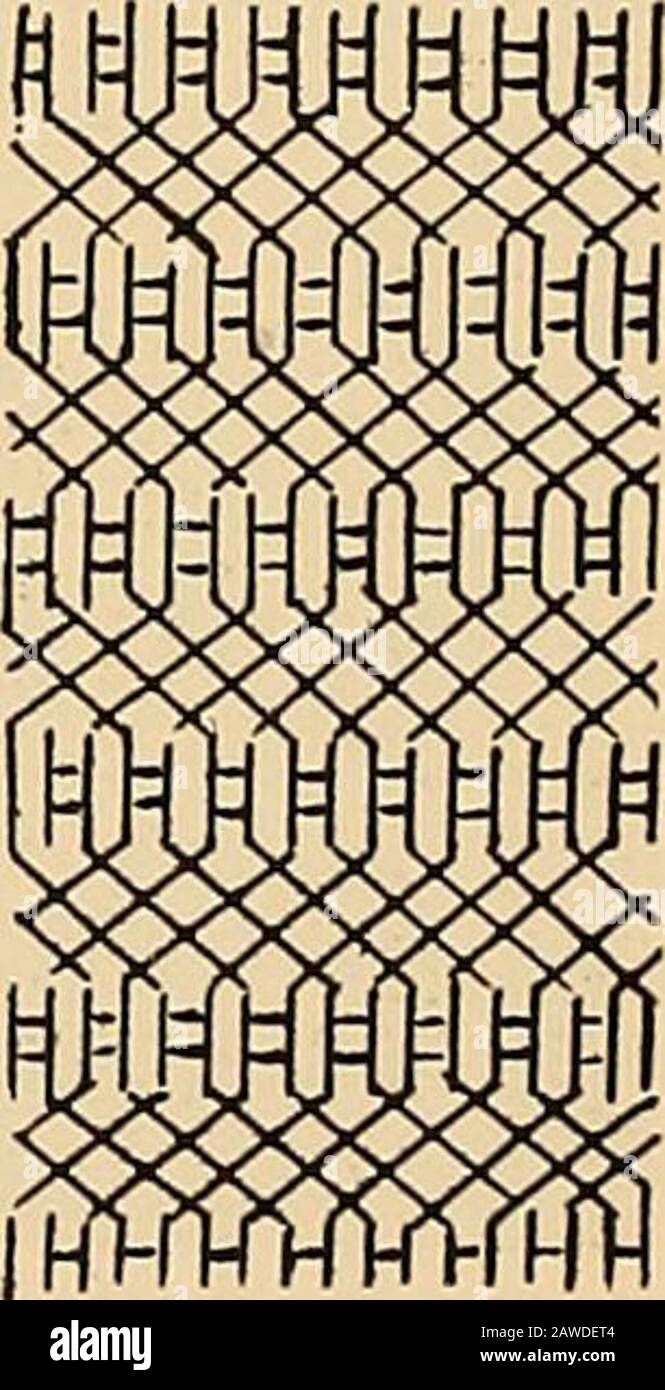A lace guide for makers and collectors; with a bibliography and five-language nomenclature, profusely illuswith halftone plates and key designs . i a::*. The weaver or horizontal bar passes twice through each so-called fish. Theweavers and all other threads are twisted twice between fish and between otherstitches, but the body of the fish is not twisted after the two pairs which form it,have cloth-stitched together at the top, nor until after they have cloth-stitchedtogether at the tail. The fish are placed alternately below one another. Betweenbands of fish—that is, below one band and above t

Image details
Contributor:
The Reading Room / Alamy Stock PhotoImage ID:
2AWDET4File size:
7.2 MB (353.1 KB Compressed download)Releases:
Model - no | Property - noDo I need a release?Dimensions:
1131 x 2210 px | 19.2 x 37.4 cm | 7.5 x 14.7 inches | 150dpiMore information:
This image is a public domain image, which means either that copyright has expired in the image or the copyright holder has waived their copyright. Alamy charges you a fee for access to the high resolution copy of the image.
This image could have imperfections as it’s either historical or reportage.
A lace guide for makers and collectors; with a bibliography and five-language nomenclature, profusely illuswith halftone plates and key designs . i a::*. The weaver or horizontal bar passes twice through each so-called fish. Theweavers and all other threads are twisted twice between fish and between otherstitches, but the body of the fish is not twisted after the two pairs which form it, have cloth-stitched together at the top, nor until after they have cloth-stitchedtogether at the tail. The fish are placed alternately below one another. Betweenbands of fish—that is, below one band and above the next—the passive or obliquepairs cloth-stitch through each other twice, not counting the exit and entranceinto the fish bodies. Any pins used as supports, should soon be removed to avoidleaving unsightly gaps behind. ?= =? a^ RULES FOB MAKING 215 =? LINE G, COL. 17, Trude R Ground (original) (American).